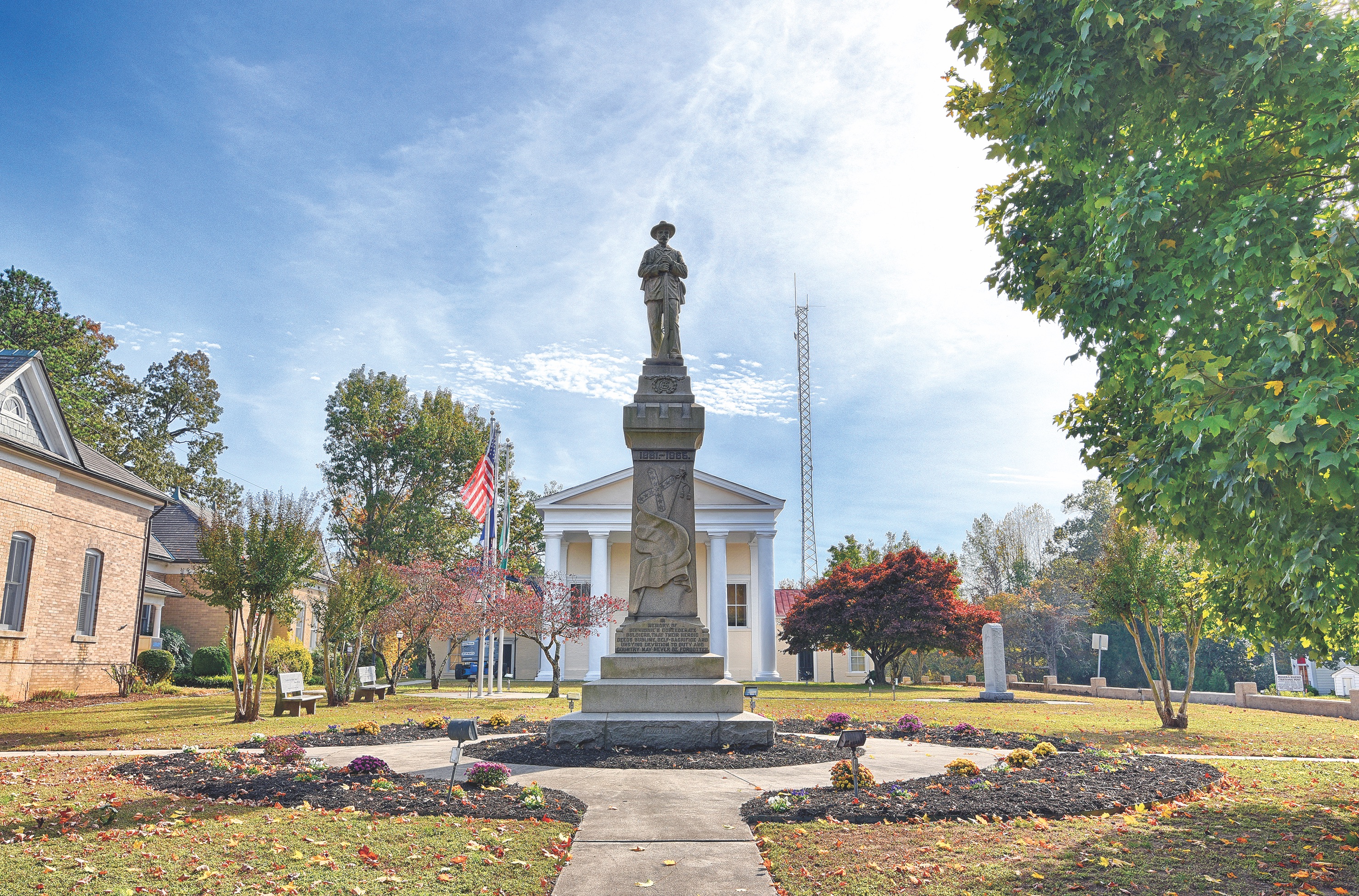The war’s closing hours erupted in this southern seat
In late March 1865, Lt. Gen. Ulysses S. Grant, eager to end the 10-month Siege of Petersburg and the war itself, took aim at the South Side Railroad, the last supply line of Confederate General Robert E. Lee’s Army of Northern Virginia. Grant ordered Maj. Gen. Philip Sheridan and his cavalry to advance on the railroad by way of an important road junction known as Five Forks in Dinwiddie County, Va. Lee countered by ordering Maj. Gen. George Pickett, with his infantry division and cavalry under Colonel Thomas Munford, Maj. Gen. William H.F. “Rooney” Lee, and Maj. Gen. Thomas Rosser, to hold the crossroads “at all hazards.”

On April 1, 1865, Sheridan’s cavalry pinned the Confederate force in position while the 5th Corps under Maj. Gen. Gouverneur K. Warren attacked and overwhelmed the Confederate left flank. The Union victory heralded the end of the stalemate outside Petersburg and set the stage for the breakthrough the next day. On April 2, Lee informed Jefferson Davis that Petersburg and Richmond would have to be evacuated. Lee surrendered to Grant seven days later.
Two engagements in the area on March 31, 1865, set the stage for the Battle of Five Forks, including one along White Oak Road in which Union troops from the 5th Corps and 2nd Corps managed to push back Confederates on Lee’s far right near Burgess’ Mill and Hatcher’s Run. The second engagement, the Battle of Dinwiddie Court House, lasted most of the day and ended with a Confederate victory, but failed to weaken or drive back Sheridan’s force.
The abundant action in and around Dinwiddie County in the waning days of the war means visitors to the area can explore copious Civil War-related sites, including the Five Forks Battlefield, the Dinwiddie Court House, churches that served as field hospitals, and the final resting grounds of some who fought here. Nearby Pamplin Historical Park offers a unique experience with four museums, three historic homes, and the breakthrough battlefield of April 2, 1865, near Petersburg.
[hr]
Dinwiddie Court House/Confederate Soldiers Monument
14103 Boydton Plank Rd.
Erected by the citizens of Dinwiddie County in 1909, this monument stands in front of the Dinwiddie Court House and is dedicated to “the memory of Dinwiddie’s Confederate soldiers, that their heroic deeds sublime, self-sacrifice and undying devotion to duty and country may never be forgotten.” On March 31, 1865, the combined Confederate cavalry and infantry force commanded by General Pickett attacked General Sheridan’s army as it moved north from the courthouse. It was the last brief victory for the Army of Northern Virginia, but failed to drive back Sheridan’s force before the Battle of Five Forks. Today the courthouse is open for visitors, and hosts events and talks.
[hr]
Namozine Church
Intersection of Mill Quarter Road and Namozine Road, Amelia County
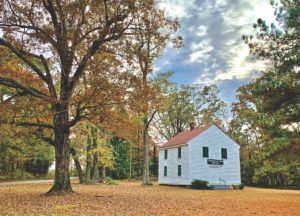
On April 3, 1865, as Lee’s men evacuated Petersburg and Richmond and marched toward Amelia Court House, where food and supplies awaited them, cavalries skirmished around this church. The church was also used as a field hospital by both armies during engagements in the area. The church, built in 1847, survived the war and remains virtually unchanged since its construction.
[hr]
Five Forks Battlefield 9840 Courthouse Rd.
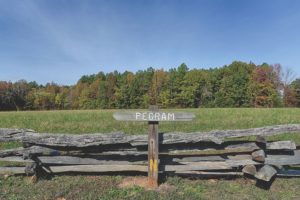
Much of the Five Forks battlefield has been preserved by the National Park Service as part of the Petersburg National Battlefield Park. Although most of the Confederate earthworks have disappeared to the soil, the land around the five-way intersection mirrors its 1865 appearance. A monument to the battle stands at that critical junction. A driving tour of the battlefield starts at the visitor center and includes five additional stops where interpretive wayside markers tell the story of the battle. The battlefield also includes walking trails.
[hr]
Poplar Grove National Cemetery
8005 Vaughan Rd., Petersburg
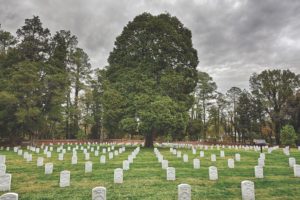
The tract of land on which the Poplar Grove National Cemetery sits had been the campground for the 50th New York Volunteer Engineers. During the war they constructed a Gothic-style pine log church called Poplar Grove. In 1866, it was chosen as the site for a national cemetery and approximately 5,000 Union soldiers from nearly 100 separate burial sites around Petersburg were moved here.
[hr]
Sutherland Station 19698 Namozine Rd.
On Sunday, April 2, 1865, as the main Union assault broke the Confederate line at Petersburg, a detachment under Confederate Brig. Gen. John R. Cooke tried to protect the railroad here. Union infantry under Maj. Gen. Nelson Miles attacked from the south around 11 a.m. Three assaults failed, but a fourth that struck Cooke’s left flank in mid-afternoon turned the tide for the Federals.
[hr]
Calvary Episcopal Church
14211 Courthouse Rd.
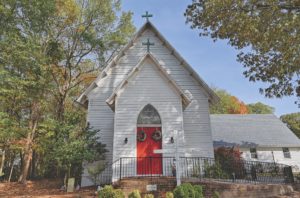
Built in 1840, the Calvary Episcopal Church was used as a field hospital during the engagements here. Ten unknown Union soldiers from Maine who were killed at the Battle of Dinwiddie Court House are buried on the grounds, the location marked by a single gravestone. The remains were never returned to Maine due to disagreements about items pillaged from the church by Union troops.
Living History
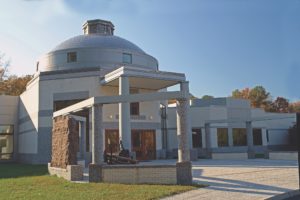
Nearly 3 million Americans served in the Union and Confederate armies during the Civil War, a majority in the lower ranks. The interactive Civil War campus at Pamplin Historical Park highlights the common soldiers’ experience, including the ability to explore mock camps and interact with living historians. Three historic homes are maintained onsite, as well as the breakthrough battlefield of April 2, 1865. The National Museum of the Civil War Soldier is home to the exhibit “Duty
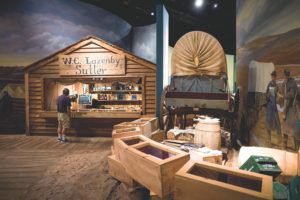
Called Me Here: The Common Soldier in the Civil War.” The park is open from 9 a.m. to 5 p.m. daily March through November and weekends only December through February. 6125 Boydton Plank Rd., Petersburg

